Blog post – 24th March 2020
~~~
This famous daily relaxation technique will help you cope with Covid-19
By Renata Taylor-Byrne, Lifestyle Coach/Counsellor – Copyright 2020
~~~
Introduction
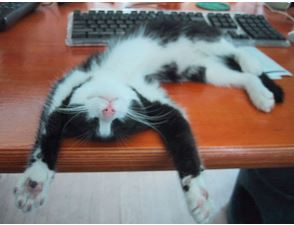 Because of the very great seriousness of the present situation regarding Covid-19, we all need to stay in our homes as much as possible, to stop the spread of this virus.
Because of the very great seriousness of the present situation regarding Covid-19, we all need to stay in our homes as much as possible, to stop the spread of this virus.
So I thought that at this time, you may be interested in learning about a type of relaxation that has fantastic health benefits, which you could try out at home. It can be practised for a mere 20 minutes a day (longer if you want to combine it with a siesta) and it is brilliant!
You can do the exercise sitting in a chair, lying on the settee or lying on the floor.
It’s called Progressive muscle relaxation (PMR) and here are some of the health benefits:
* It reduces high blood pressure.
*It boosts your immune system, (crucial at a time like this).
* It relieves depression, anxiety, pain, heart disease, insomnia, panic attacks and digestion problems.
The creator of this technique was a doctor called Edmund Jacobson (1888 – 1983). He was a physiologist, and physician in psychiatry and internal medicine. He spent seventy years researching and developing the key insights of scientific relaxation, based on years of observing tension within the human body. Starting in 1908 at Harvard University, then Cornell, and after that Chicago University, he then set up his own institution in Chicago called the Laboratory for Clinical Physiology.
The build-up of tension in our bodies
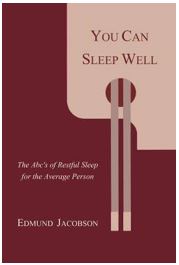 Most people don’t realise that they become increasingly physically tense as they try to solve the daily problems of their lives. They use up lots of their physical energy just maintaining that tension. Because of this phenomenon, of accumulation, or building up of tensions in the body’s muscles, day in and day out, people develop anxiety, depression, and various physical illnesses.
Most people don’t realise that they become increasingly physically tense as they try to solve the daily problems of their lives. They use up lots of their physical energy just maintaining that tension. Because of this phenomenon, of accumulation, or building up of tensions in the body’s muscles, day in and day out, people develop anxiety, depression, and various physical illnesses.
It works like this: As we handle the daily tasks and challenges of life, physical tension slowly builds up in our bodies throughout the day, and this accumulating tension is further intensified by a steady bombardment of bad news via mobile phones, the TV and newspapers.
But how is physical tension linked to anxiety?
As you respond to some stressful event, this creates tension in your body, and feelings of anxiety in your brain-mind, which makes you wide awake, on full alert, ready to deal with what is ahead of us. This is the classic ‘Fight or flight’ response switching on to protect you. However, at the end of the day, those accumulated muscle tensions don’t just melt away as you get into bed and try to go to sleep. They can stop you getting to sleep and/or cause wakefulness during the night or early morning.
Some people try to get rid of physical tension and insomnia by taking sleeping tablets, which makes the situation worse. Nick Littlehales (2016)[1] states that one of the first jobs that a sports club will request him to do, when they call him in, is to get the sportsmen and women off sleeping tablets, because of the drain on the body’s energy that they inflict.
How bodily tension is reduced
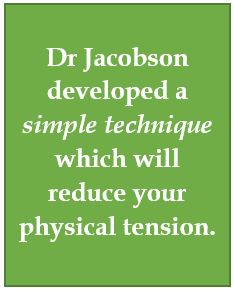 What Dr Jacobson developed was a simple technique which, if you practise it daily, will reduce your physical tension. It won’t work if you just do it from time to time. The system is very simple, and involves tensing a particular set of muscles, holding it for a few seconds, and then releasing the tension. Each day, as you are doing the tension and release exercises, you will become more aware of what it feels like when you have tension in different parts of your body. And then you can slowly learn to release that tension. Day by day, your tension level reduces as you become aware of what you are doing to your body, as you go about your daily life.
What Dr Jacobson developed was a simple technique which, if you practise it daily, will reduce your physical tension. It won’t work if you just do it from time to time. The system is very simple, and involves tensing a particular set of muscles, holding it for a few seconds, and then releasing the tension. Each day, as you are doing the tension and release exercises, you will become more aware of what it feels like when you have tension in different parts of your body. And then you can slowly learn to release that tension. Day by day, your tension level reduces as you become aware of what you are doing to your body, as you go about your daily life.
And this reduction in levels of physical tension has beneficial effects throughout the body-bran-mind. People have more energy, less illness, reduced anxiety and depression; and this slowly transforms people’s self-confidence. They are able to sleep better by banishing insomnia; and their memory improves.
The people Jacobson helped with his research
Jacobson’s clients included engineers, journalists, lawyers, doctors, bankers, dentists and people from all the current businesses and professions which were operating at that time. When his first book was printed, (which was entitled “Progressive Relaxation”, in 1929), he was told by the workers and printers at the Chicago University Press that they in particular experienced a great deal of tension. And later in his career he came across union members in the garment and other industries, and assembly line workers who displayed evidence of extreme tension. (Of course, today, there is a great deal of denial that such levels of tension are induced by stressful jobs!)
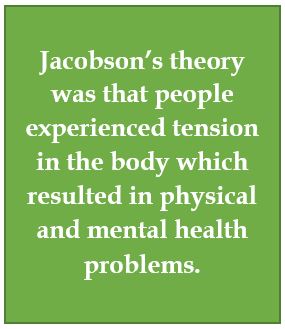 Jacobson’s theory was that clients experienced tension because they had hyperactive bodies and minds, and that the build-up of tension in the body resulted in the following symptoms: anxiety, high blood pressure, cardiovascular disorders, nervous indigestion, peptic ulcers and spastic colon. People were trying to cope with a very fast and constantly changing society, and the problem was that their efforts to cope were using up lots of energy.
Jacobson’s theory was that clients experienced tension because they had hyperactive bodies and minds, and that the build-up of tension in the body resulted in the following symptoms: anxiety, high blood pressure, cardiovascular disorders, nervous indigestion, peptic ulcers and spastic colon. People were trying to cope with a very fast and constantly changing society, and the problem was that their efforts to cope were using up lots of energy.
~~~
Coming soon:
|
Relax Your Way to a Better Life:
Using Dr Jacobson’s Progressive Muscle Relaxation technique for physical and mental health
By Renata Taylor-Byrne, Lifestyle Coach-Counsellor
|
|
 |
This book describes a non-medical process for improving your physical health and emotional well-being. It is a tried and test technique for decades, and is well-researched in the scientific literature. If you want to have a happier, healthier, more contented life, then please take a look at the link below:
|
|
|
For more information, please click this link: https://abc-bookstore.com/jacobsons-progressive-muscle-relaxation-book/
|
|
| |
|
|
~~~
Controlling our energy expenditure
This energy, called adenosine triphosphate, comes from the food we eat. And Jacobson compared it to the petrol supply in a car – there is a limited amount; and when it’s gone, it’s gone. In other words, we have a “personal petrol supply” which we need for our brain, nerves and muscles, and it comes directly from the food we eat. This energy supply is used up by the activities we engage in to achieve our goals. So when we have a job to do, we use the muscles of our body (we have 1,030 skeletal muscles) and we contract and relax those muscles as necessary.
But what Jacobson knew from experience was that none of the doctors who had dealt with his clients before they consulted him, had told their patients about the need to control their energy as they lived their lives. The clients were well versed in the reality of businesses, and knew that, if they spent too much money, on the wrong kinds of investments, they would risk loss of profits and, ultimately, bankruptcy. But they had no awareness of the need for them to manage their own personal supply of physical energy. Here is what Jacobson found:
“I have had experience with the top management of some of … (the United States’) most successful corporations. The officials conducted business duties with outstanding efficiency and success, yet spent their personal energies quite extravagantly.
 “I was shocked to find that 40% of the top executives of one leading corporation had blood vessels that were beyond cure. They were paying with their lives for their years of energy extravagance.”
“I was shocked to find that 40% of the top executives of one leading corporation had blood vessels that were beyond cure. They were paying with their lives for their years of energy extravagance.”
(Jacobson, 1976, Page 12).
~~~
A closer look at how tension and stress builds up in our bodies
If we don’t give ourselves time to relax and recover after we have exerted ourselves – (for example after we’ve had a hard day’s work; or had to tackle a serious problem; deal with an accident or emergency; or any one of the many stressful challenges that humans of all ages meet on a frequent basis) – then we can cause serious physical and mental health problems for ourselves.
Here’s why: Evolution has developed our bodies so that we are able to handle stressors, and then recover from them quickly. As human beings we’ve got a very efficient, in-built system for handling these pressures. It’s called the ‘Fight or flight’ response, and our bodies react with the release of stress hormones which help us cope with the problems that arise.
And then, we have an automatic recovery system which kicks in after a stressful event, and it’s called the ‘Rest and digest’ system. These two different but interrelated types of responses are part of our autonomic (meaning ‘automatic’) nervous system, which protects our bodies when attacked.
So, slowly, after we have dealt with a sudden crisis or stressful event, our digestion returns to normal, our breathing slows down, as does our heart rate, and we get back to full energy.
 But if we don’t give ourselves time to recover in-between these stressful events, we stop the natural recovery process from taking place. Our bodies experience more and more stress without this safety valve, or recovery stage, to dissipate it. Then there is a gradual accumulation of tension in our muscles, and stress hormones build up in our blood and body tissues.
But if we don’t give ourselves time to recover in-between these stressful events, we stop the natural recovery process from taking place. Our bodies experience more and more stress without this safety valve, or recovery stage, to dissipate it. Then there is a gradual accumulation of tension in our muscles, and stress hormones build up in our blood and body tissues.
So let us now take a quick look at how to do Jacobson’s muscle relaxation exercises.
~~~
Coming soon:
Relax Your Way to a Better Life:
Using Dr Jacobson’s Progressive Muscle Relaxation technique for physical and mental health
By Renata Taylor-Byrne, Lifestyle Coach-Counsellor
|
 |
This book describes a non-medical process for improving your physical health and emotional well-being. It is a tried and test technique for decades, and is well-researched in the scientific literature. If you want to have a happier, healthier, more contented life, then please take a look at the link below: |
| For more information, please click this link: https://abc-bookstore.com/jacobsons-progressive-muscle-relaxation-book/ |
How to do the Progressive Muscle relaxation technique
- Lie on the floor, or on a couch or settee, or sit in a chair.
- Then, tense up and then relax each of the main muscles of your body to the count of five seconds; and then release and relax. For example:
– Start with your hands and forearms. Tighten your hands and feel the tension in your fists and forearms. Hold it to the count of five seconds. And relax.
– Then lift your shoulders, as if trying to move them up to your ears. Feel the tension in your shoulders. Hold it to the count of five seconds. And relax.
– Then clench your teeth together, to tense your jaw muscles. Feel the tension in your jaw muscles. Hold it to the count of five seconds. And relax.
– You will find several good videos on YouTube which will teach you a comprehensive range of muscles to tense and relax, so I will not present any more examples here.
- Next, when you have finished tensing and relaxing the different parts of your body, give yourself a 15-20 minute block of time to savour the feeling of complete physical relaxation. Just lie or stay in your fully relaxed position until the time is up.
- You may find you fall asleep and this is a good way to combine muscle relaxation with a daily siesta. You will feel refreshed, with renewed energy, after the exercise.
- This is crucial: For this technique to work, you need to do this every day. You will get an energy boost from this relaxation technique and big benefits for your heart, blood pressure, and stress and anxiety levels.
- You will also find that you will fall asleep more quickly at night if you stick to the daily pattern of practising the relaxation exercises. A tense body with tense muscles will prevent sleep for a long time during the night.
- But if you learn to become aware of, and to deliberately let go of, tension in your muscles, you will slowly become more and more relaxed; and you will get the full benefit of a good night’s sleep in time. (Aim for at least 8 hours of sleep each night). The more relaxed you are, the quicker you will be able to get to sleep and have the mental nourishment that only sleep can give your body.
~~~
Coming soon:
Relax Your Way to a Better Life:
Using Dr Jacobson’s Progressive Muscle Relaxation technique for physical and mental health
By Renata Taylor-Byrne, Lifestyle Coach-Counsellor
|
 |
This book describes a non-medical process for improving your physical health and emotional well-being. It is a tried and test technique for decades, and is well-researched in the scientific literature. If you want to have a happier, healthier, more contented life, then please take a look at the link below: |
| For more information, please click this link: https://abc-bookstore.com/jacobsons-progressive-muscle-relaxation-book/ |
Proof of its effectiveness: Recent research studies into the effectiveness of progressive muscle relaxation
- The most recent research study I’ll describe, was conducted in Greece, in January 2019, with 50 long-term unemployed people.[2] They had been suffering from anxiety disorders, and the participants were split up into 2 groups. One group of thirty individuals were put on an 8 week progressive muscle relaxation training programme, and the control group did not receive any training.
At the start of the research study, the participants’ level of stress, anxiety, depression, integrity, their health–related quality of their life, and sense of safety and security was measured. And at the end of the research, the result was that the intervention group (which had the training in progressive muscle relaxation) had improved results in the aspects of their functioning which had been measured by the researchers.
So, even though the intervention group had statistically higher levels of depression, anxiety and stress before the intervention, after the follow up this group showed a significant reduction in those levels, whereas in the control group no significant difference was observed. Between the groups, the differences were statistically significant. To summarise the findings, the intervention group showed a decrease in the evidence of depression, anxiety and stress, the quality of their life and general mental health had improved and they felt more of a sense of coherence about their lives.
- A research study which took place in 2018 is another example: After having had a caesarean section, a lot of women suffer pain, disturbed sleep and have difficulty moving and walking. A research study was undertaken at the Damanhour National Medical Institute in Egypt with a group of women, 80 in number, to see if progressive muscle relaxation could help them recover from their operations.[3] The research study took the form of a randomised, controlled clinical trial, and 40 women were assigned to a study group and 40 women were assigned to the control group. The women in the study group were shown how to do progressive muscle relaxation, and then did it themselves. The results appeared to be quite conclusive: When the quality of the sleep experienced in the two groups were compared, 62.5% of the study group had nourishing sleep, compared to 5% of the control group. Regarding the intensity of the pain experienced by the control group, as they tried to move about, the level of pain they experienced was described by them as being at a level of 70%. On the other hand, the level of limitations in their movement experienced by the study group, because of pain, was ‘significantly absent’ from the whole of this group.
Therefore the conclusion made by the research team was that progressive muscle relaxation significantly reduced pain and made women’s physical activities less painful and restrictive, and there was a definite improvement in sleep quality. The researchers concluded in their report that their findings were similar to others in the same area of research: that the pain that mothers who had experienced caesareans was reduced by progressive muscle relaxation through the operation of several body systems.
They observed that it reduces the stress hormones of epinephrine, catecholamines and cortisol. Also, the deep breathing technique used, increases the oxygen levels in the body, and reduces the oxidative factors and as a result of this, less pain is experienced. It can also restrict the reaction of the sympathetic nervous system (the ‘Fight or flight’ response) and stimulate the parasympathetic nerves (the ‘rest and digest’ part of the autonomic nervous system) by restricting the feedback pathway from the mind to the muscles and as a result, block the biological response to pain. As a consequence, it may lower the heart rate, the level of blood pressure and the metabolic rate.
The outcome of the research study, the researchers concluded, was that post-caesarean women who practiced progressive muscle relaxation technique have lower post caesarean pain, a better quality of sleep and a reduced level of restriction on their physical activities than those who received just the routine nursing care.
Coming soon:
Relax Your Way to a Better Life:
Using Dr Jacobson’s Progressive Muscle Relaxation technique for physical and mental health
By Renata Taylor-Byrne, Lifestyle Coach-Counsellor
|
 |
This book describes a non-medical process for improving your physical health and emotional well-being. It is a tried and test technique for decades, and is well-researched in the scientific literature. If you want to have a happier, healthier, more contented life, then please take a look at the link below: |
| For more information, please click this link: https://abc-bookstore.com/jacobsons-progressive-muscle-relaxation-book/ |
Conclusion
 Jacobson’s progressive relaxation technique has been acknowledged by health care professionals throughout the world as being very effective in many different healthcare environments. It’s a very straightforward technique that anyone can learn and use for themselves, and this increases their sense of self-efficacy and control over their bodies, and also increases their energy level. It’s a lot cheaper than drugs, medical or otherwise, and doesn’t have any negative side effects either!
Jacobson’s progressive relaxation technique has been acknowledged by health care professionals throughout the world as being very effective in many different healthcare environments. It’s a very straightforward technique that anyone can learn and use for themselves, and this increases their sense of self-efficacy and control over their bodies, and also increases their energy level. It’s a lot cheaper than drugs, medical or otherwise, and doesn’t have any negative side effects either!
The final key learning point about the technique is this: 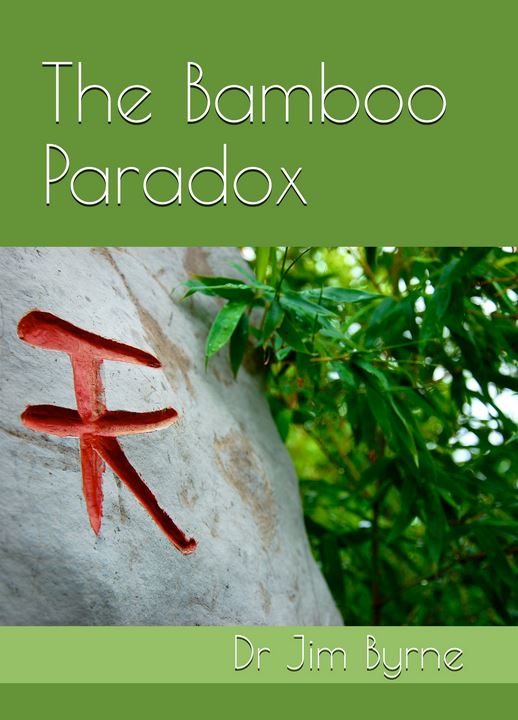 It teaches you to raise your awareness of the muscles in your body; and you learn to notice the tension, and how to let go of it, in each of the main muscles of your body. If this is done regularly (daily is best), you become more and more skilled at spotting the tension in your muscles as it arises. Then you can relax the tension immediately after you have created it, instead of letting the tension accumulate in your body. And the more you practise, the more you can automatically spot and release unnecessary tension.
It teaches you to raise your awareness of the muscles in your body; and you learn to notice the tension, and how to let go of it, in each of the main muscles of your body. If this is done regularly (daily is best), you become more and more skilled at spotting the tension in your muscles as it arises. Then you can relax the tension immediately after you have created it, instead of letting the tension accumulate in your body. And the more you practise, the more you can automatically spot and release unnecessary tension.
For information about how to perform PMR (progressive muscle relaxation), please see: “The Bamboo Paradox: The limits of human flexibility in a cruel world – and how to protect, defend and strengthen yourself”, by Dr Jim Byrne, It’s available at the ABC Bookstore Online, here: https://abc-bookstore.com/the-bamboo-paradox-a-book-of-wisdom-for-success/
~~~
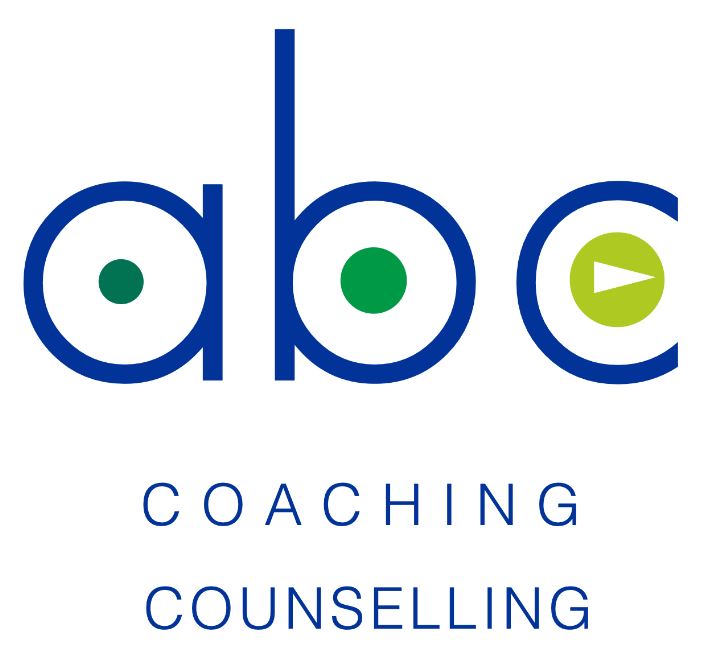 That’s all for now.
That’s all for now.
I hope you find this helpful.
Best wishes,
Renata
Renata Taylor-Byrne, Lifestyle Coach/Counsellor
~~~
References
[1] Littlehales, N. (2016) Sleep: The myth of 8 hours, the power of naps, and the new plan to recharge body and mind. London: Penguin, Random House.
[2] Meracou, K., Tsoukas, K1, Stavrinos, G., et.al. (2019) The effect of PMR on emotional competence, depression-anxiety-stress, and sense of coherence, health-related quality of life, and well-being of unemployed people in Greece: An Intervention study. EXPLORE, Volume 15, Issue 1, January–February 2019: Pages 38-46. https://doi.org/10.1016/j.explore.2018.08.001
[3] Ismail,N.,Taha, W., and Elgzar, I. (2018) The effect of Progressive muscle relaxation on Post-caesarean section pain, quality of sleep and physical activities limitation (2018)International Journal of studies in Nursing. Vol 3, No.3 (2018)ISSN (online) DOI: https://doi.org/10.20849/ijsn.v3i3.461
~~~
|
Relax Your Way to a Better Life:
Using Dr Jacobson’s Progressive Muscle Relaxation technique for physical and mental health
By Renata Taylor-Byrne, Lifestyle Coach-Counsellor
|
| |
This book describes a non-medical process for improving your physical health and emotional well-being. It is a tried and test technique for decades, and is well-researched in the scientific literature. If you want to have a happier, healthier, more contented life, then please take a look at the link below:
|
|
For more information, please click this link: https://abc-bookstore.com/jacobsons-progressive-muscle-relaxation-book/
|

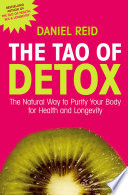 Daniel Reid (2003) put it very clearly:
Daniel Reid (2003) put it very clearly: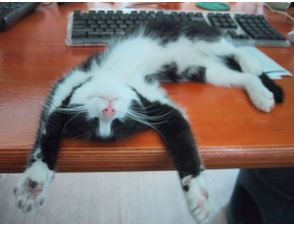 Thankfully, we have a wonderful, in-built tranquiliser, which you may not know about. It’s a biochemical mechanism inside us, and it’s been called the ‘relaxation response”. It a healing mechanism which can help us recover from the stress effects on our bodies; but it only operates fully if you give yourself time to relax properly (which does not mean flopping on the sofa!)
Thankfully, we have a wonderful, in-built tranquiliser, which you may not know about. It’s a biochemical mechanism inside us, and it’s been called the ‘relaxation response”. It a healing mechanism which can help us recover from the stress effects on our bodies; but it only operates fully if you give yourself time to relax properly (which does not mean flopping on the sofa!)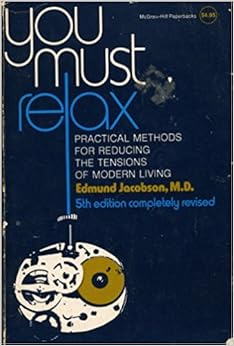 The best relaxation technique I have researched is called ’Progressive Muscle Relaxation’ (PMR).
The best relaxation technique I have researched is called ’Progressive Muscle Relaxation’ (PMR). You can do this in a space where you can lie down, where it is calm and quiet, and you won’t be disturbed, for just a few minutes each day.
You can do this in a space where you can lie down, where it is calm and quiet, and you won’t be disturbed, for just a few minutes each day. My book – “Relax Your Way to a Better Life” – explains this technique, including
My book – “Relax Your Way to a Better Life” – explains this technique, including I hope you explore this system; get your worry under control; and improve your health and happiness.
I hope you explore this system; get your worry under control; and improve your health and happiness.
 Because of the very great seriousness of the present situation regarding Covid-19, we all need to stay in our homes as much as possible, to stop the spread of this virus.
Because of the very great seriousness of the present situation regarding Covid-19, we all need to stay in our homes as much as possible, to stop the spread of this virus. Most people don’t realise that they become increasingly physically tense as they try to solve the daily problems of their lives. They use up lots of their physical energy just maintaining that tension. Because of this phenomenon, of accumulation, or building up of tensions in the body’s muscles, day in and day out, people develop anxiety, depression, and various physical illnesses.
Most people don’t realise that they become increasingly physically tense as they try to solve the daily problems of their lives. They use up lots of their physical energy just maintaining that tension. Because of this phenomenon, of accumulation, or building up of tensions in the body’s muscles, day in and day out, people develop anxiety, depression, and various physical illnesses. What Dr Jacobson developed was a simple technique which, if you practise it daily, will reduce your physical tension. It won’t work if you just do it from time to time. The system is very simple, and involves tensing a particular set of muscles, holding it for a few seconds, and then releasing the tension. Each day, as you are doing the tension and release exercises, you will become more aware of what it feels like when you have tension in different parts of your body. And then you can slowly learn to release that tension. Day by day, your tension level reduces as you become aware of what you are doing to your body, as you go about your daily life.
What Dr Jacobson developed was a simple technique which, if you practise it daily, will reduce your physical tension. It won’t work if you just do it from time to time. The system is very simple, and involves tensing a particular set of muscles, holding it for a few seconds, and then releasing the tension. Each day, as you are doing the tension and release exercises, you will become more aware of what it feels like when you have tension in different parts of your body. And then you can slowly learn to release that tension. Day by day, your tension level reduces as you become aware of what you are doing to your body, as you go about your daily life. Jacobson’s theory was that clients experienced tension because they had hyperactive bodies and minds, and that the build-up of tension in the body resulted in the following symptoms: anxiety, high blood pressure, cardiovascular disorders, nervous indigestion, peptic ulcers and spastic colon. People were trying to cope with a very fast and constantly changing society, and the problem was that their efforts to cope were using up lots of energy.
Jacobson’s theory was that clients experienced tension because they had hyperactive bodies and minds, and that the build-up of tension in the body resulted in the following symptoms: anxiety, high blood pressure, cardiovascular disorders, nervous indigestion, peptic ulcers and spastic colon. People were trying to cope with a very fast and constantly changing society, and the problem was that their efforts to cope were using up lots of energy.
 “I was shocked to find that 40% of the top executives of one leading corporation had blood vessels that were beyond cure. They were paying with their lives for their years of energy extravagance.”
“I was shocked to find that 40% of the top executives of one leading corporation had blood vessels that were beyond cure. They were paying with their lives for their years of energy extravagance.” But if we don’t give ourselves time to recover in-between these stressful events, we stop the natural recovery process from taking place. Our bodies experience more and more stress without this safety valve, or recovery stage, to dissipate it. Then there is a gradual accumulation of tension in our muscles, and stress hormones build up in our blood and body tissues.
But if we don’t give ourselves time to recover in-between these stressful events, we stop the natural recovery process from taking place. Our bodies experience more and more stress without this safety valve, or recovery stage, to dissipate it. Then there is a gradual accumulation of tension in our muscles, and stress hormones build up in our blood and body tissues.
 Jacobson’s progressive relaxation technique has been acknowledged by health care professionals throughout the world as being very effective in many different healthcare environments. It’s a very straightforward technique that anyone can learn and use for themselves, and this increases their sense of self-efficacy and control over their bodies, and also increases their energy level. It’s a lot cheaper than drugs, medical or otherwise, and doesn’t have any negative side effects either!
Jacobson’s progressive relaxation technique has been acknowledged by health care professionals throughout the world as being very effective in many different healthcare environments. It’s a very straightforward technique that anyone can learn and use for themselves, and this increases their sense of self-efficacy and control over their bodies, and also increases their energy level. It’s a lot cheaper than drugs, medical or otherwise, and doesn’t have any negative side effects either! It teaches you to raise your awareness of the muscles in your body; and you learn to notice the tension, and how to let go of it, in each of the main muscles of your body. If this is done regularly (daily is best), you become more and more skilled at spotting the tension in your muscles as it arises. Then you can relax the tension immediately after you have created it, instead of letting the tension accumulate in your body. And the more you practise, the more you can automatically spot and release unnecessary tension.
It teaches you to raise your awareness of the muscles in your body; and you learn to notice the tension, and how to let go of it, in each of the main muscles of your body. If this is done regularly (daily is best), you become more and more skilled at spotting the tension in your muscles as it arises. Then you can relax the tension immediately after you have created it, instead of letting the tension accumulate in your body. And the more you practise, the more you can automatically spot and release unnecessary tension.